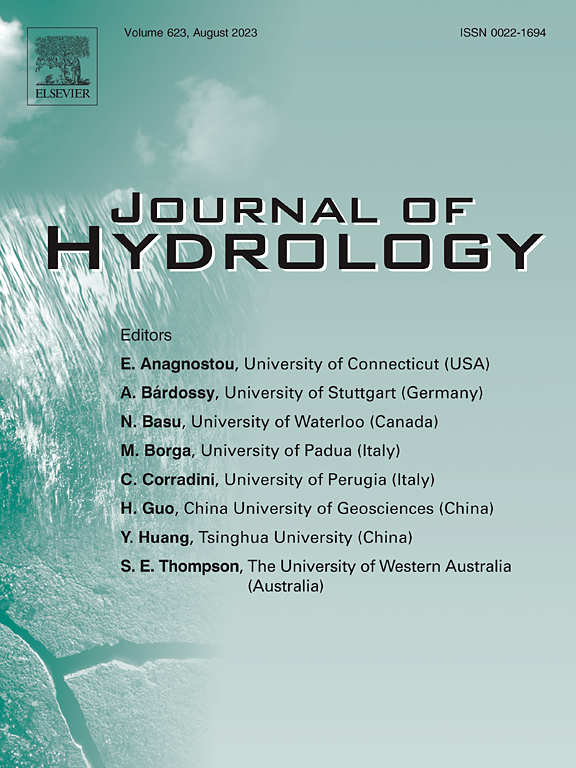Novel insights into the DOM-driven processes affecting nitrogen cycling in shallow aquifers of the West Liao River Plain: Evidence from FT-ICR MS and isotope analyses
IF 5.9
1区 地球科学
Q1 ENGINEERING, CIVIL
引用次数: 0
Abstract
The significant influence of hydro(bio)geochemical processes induced by organic matter (OM) on groundwater nitrogen contamination has been widely reported. However, the mechanisms controlling the heterogeneous distribution of this contamination as well as the impact of the biodegradability of OM on nitrogen species in sedimentary aquifers are not yet well understood. In the West Liao River Plain (WLRP), northeastern China, shallow groundwater is severely affected by ammonia nitrogen (NH4+-N), accompanied by high Fe2+ concentrations. This study used high-resolution organic matter spectroscopy (FT-ICR MS) and stable isotope techniques to investigate the contrasting sources of DOM and their effect on nitrogen cycling in two adjacent reaches with different hydrogeological settings. The disparities in controlling nitrogen occurrence and transformation by coupled processes involving OM and Fe oxides in the two reaches were identified. High levels of NH4+-N (average 1.94 mg/L) in groundwater were observed in the reaches of XKR, where groundwater flow is sluggish and sedimentary aquifers are rich in OM derived from terrestrial humic components. The strong humification and degradation of DOM as well as the preferential utilization of terrestrial humic-like components with high NOSC values mediate the reductive dissolution of Fe oxides to produce a large amount of Fe2+, which provides sufficient electron donors for DNRA and promotes the presence of high ammonia groundwater. In contrast, in groundwater from the WLR reaches, DOM is mainly biogenic and less degraded. The degradation of DOM and N-containing DOM is dominated by aliphatic and highly unsaturated compounds, respectively, resulting in the mineralization of N-containing molecules and relatively high NH4+-N concentrations (average 0.73 mg/L). Significant accumulation of heteroatom(S)-containing DOM is evident in WLR groundwater, highlighting the importance of sulfate reduction in shaping the composition of DOM, dissolution of Fe oxides, and DNF process. These findings provide new evidence and perspectives for understanding the hydro(bio)geochemical processes controlling nitrogen cycling in alluvial aquifer systems.
求助全文
约1分钟内获得全文
求助全文
来源期刊

Journal of Hydrology
地学-地球科学综合
CiteScore
11.00
自引率
12.50%
发文量
1309
审稿时长
7.5 months
期刊介绍:
The Journal of Hydrology publishes original research papers and comprehensive reviews in all the subfields of the hydrological sciences including water based management and policy issues that impact on economics and society. These comprise, but are not limited to the physical, chemical, biogeochemical, stochastic and systems aspects of surface and groundwater hydrology, hydrometeorology and hydrogeology. Relevant topics incorporating the insights and methodologies of disciplines such as climatology, water resource systems, hydraulics, agrohydrology, geomorphology, soil science, instrumentation and remote sensing, civil and environmental engineering are included. Social science perspectives on hydrological problems such as resource and ecological economics, environmental sociology, psychology and behavioural science, management and policy analysis are also invited. Multi-and interdisciplinary analyses of hydrological problems are within scope. The science published in the Journal of Hydrology is relevant to catchment scales rather than exclusively to a local scale or site.
 求助内容:
求助内容: 应助结果提醒方式:
应助结果提醒方式:


